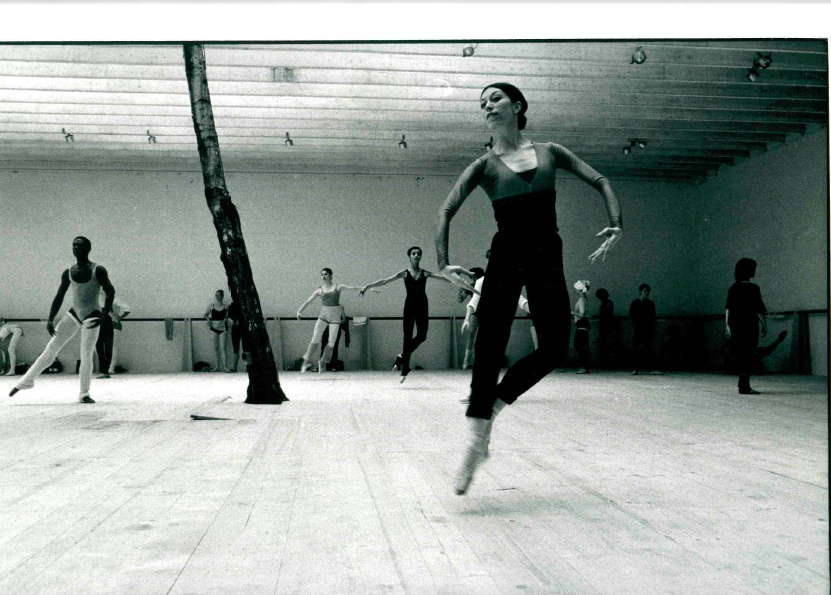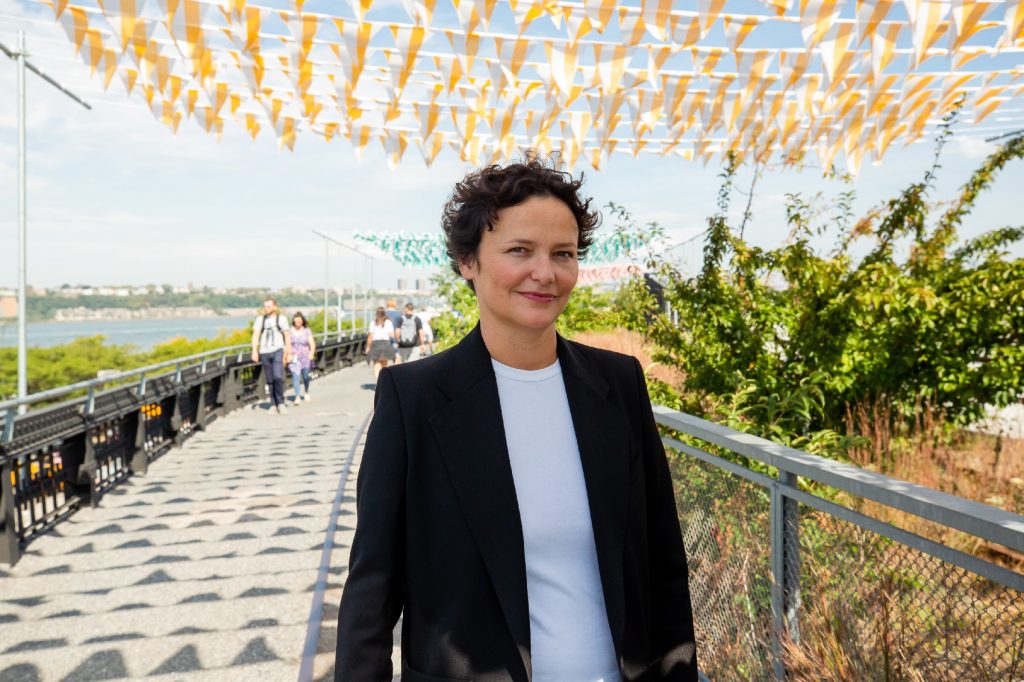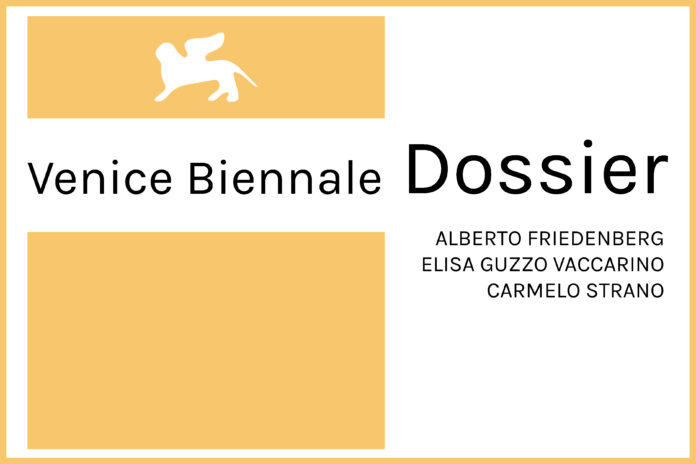New Times, New Drives
CARMELO STRANO (*)
The driving direction is changed, by thinking of the future as well as of an mmediate commitment in the current emergency. Attention has been paid to the need to update the dates and to the shifts of Architecture (2021) and Art (2022). Anyway, it is worth to emphasize above all the steady and projective manner in managing the general problems, and not just those tied to the pandemic.
You clearly feel that the Biennale is at a fundamental turning point as far as the internal scientific organization and a new commitment to the world are concerned. Deeply ingaged into the cinema, a highly esteemed long-time entrepreneur, crowned by honors and prestigious positions, Roberto Ciccuto, the new president, has the allure of a forty-year-old: for dynamism, behavior, action, ideas. He returns now, in another guise, to the place where his film “The legend of the holy drinker” was awarded the Golden Lion, in 1988, Ermanno Olmi director.
In its long life, the Biennale (it was born in 1895) has been marked over time by ups and downs, but it has always been castled in each of its disciplines that have gradually been added to the initial one, that is art. Former president Paolo Baratta has interestingly contributed to Biennale new paths over many years. But time flies and everything changes. Often, I have been pointing out the need for a profound change. For the Biennale survival.
The risk was to be avoided that this very elegant elderly lady could be considered with respectful irony by the various and dynamic new structures that have appeared here and there in the world. Compared to them, the Italian institution (in truth, it is usually called Venetian) has the special skill to update itself in an original way by taking into account the sense of the structure, of the holistic vision – so to speak – of its creative souls, of its muses. In synergy with a phenomenology which doesn’ care of reflection, the cultural rhythms of chaos and nomadism have become exasperated.
This condition helps us to understand global phenomena, including emergencies (especially the permanent ones), but not to face them. At the moment, the Biennale plays in the style of à rebour, encountering history and the stories it has crossed over the time. It does it thanks to this generous and luminous, and not only salvific, idea of the Disquieted Muses, involving all its sections and their directors”. And may these muses also become “disturbing”, as a painting by De Chirico says.
But this initiative must also be read with reference to the compass that Cicutto intends to use: a field of research and a permanent dialogue. Yeah, research. Would it be practicable by letting oneself be overwhelmed by that unbridled phenomenology? Among other things – and politics in every part of the world does not want to consider it yet – it is time to use a “constituent” method. The management of anything requires comparison, be it extended or in some cases even equal (the management of the pandemic didin’t have it in a proper way).
It is interesting that the directors have similar views, even though each of them is plunged into a specific discipline. I just mention art and architecture. Cecilia Alemani confirms this open vision with the robust and sparkling exhibition “The magic world” she realized at Venice Biennale, in 2017, as the curator of the Italian Pavilion. Also it is interesting to refer to her constant activity in various museums over the world supported by her rigorous studies..
An architect and restless researcher, Hashim Sarkis in 2021 will help us understand how “we will live together” (actually he wonders: “How will we live together?”).
Between a look at Jean-Jacques Roussseau and by referring to Vitruvius, the architecture director announces a “spatial contract”. According to this, it is clear, and at the same time opportune and important, that we should think of the architect as a direct descendant of the author of “De Architectura” .
In short, a central and unavoidable figure in rethinking today’s society, starting with the city. But Sarkis, in addition to the dialogue among the sections of the Biennale, will open an interdisciplinary dialogue within his exhibition, involving various professionals such as sociologists, journalists, artisans, or simply citizens.
Carmelo Strano, philosopher (his theories awarded by international scientific institutions), critic of art and expressive languages, poet, distinguished professor of aesthetics, author of dozens of volumes and countless essays and articles (La Repubblica, Corriere della Sera, Il Sole 24 Ore , Il Tempo, and reviews such as Domus and L’Arca), editor of fyinpaper.com, an international geoculture magazine.
The Disquieted Muses of Dance and Theatre
ELISA GUZZO VACCARINO (*)

The exhibition entitled The disquieted muses at the Biennale is the mirror of Italian cultural history, in its alternating events. It traces seven decades of Venice Biennale occupying the central pavilion of the Gardens from 29 August to 8 December.
Even in this complicated and difficult 2020, the new president Roberto Cicutto strongly wanted this project, in the sign of interdisciplinarity and activities’ flow.
For the first time, on the occasion of the 125th anniversary of the Foundation, all six current sectors contribute together to the event sharing twelve spaces. The exhibition starts from the 1930s when the Film Festival came to life, awarding Olympia by the dancer-director Leni Riefensthal, Hitler’s favorite. In 1934, Max Reinhardt’s The Merchant of Venice went on stage. The austrian multifaceted director wa a standard-bearer of innovation, would also influence Hollywood. In the same year, A fairy tale by Andersen imposed the dances of Jia Ruskaja, supported by authoritative friends among fascist politicians and intellectuals. The charming free-expressive choreographer, who was born in Crimea, will then be the director of the National Academy in Rome.
At the time of the Cold War (1948-1964) the invitation to Bertold Brecht with Mother Courage and her children, twice in 1951 and 1961, did not go ahead for government bans. Instead, Bartok’s Wonderful Mandarin was staged, banned for scandalous controversies in Nazi Germany.
In the 1950s, the New York City Ballet arrived from the USA with the works of George Balanchine and Jerome Robbins, both of Russian descent, but champions of the new post-romantic Western ballet. Old Europe responded with Aurel Milloss, Hungarian naturalized Italian, at the head of the Rome Opera Ballet and then of the Ballets of the Biennale with a repertoire which even included a Ballad without music.
The year 1968 brought three more American authors. First, Alvin Ailey with an unpublished “black” dance, which was not folkloric, not exotic not even entertainment, marking a lasting turning point in the history of world dance. Then Merce Cunningham frees dance from the role of armpit of music, in complicity with his partner John Cage. Finally, Alwin Nikolais, total artist with Imago, abstract and formal work, in which the future director of Dance Carolyn Carlson shines, and to whom an entire sector of Biennale will be dedicated.
In the 1970s, under the presidency of Carlo Ripa of Meana, The Living Theatre, Jerzy Grotowsky and Meredith Monk broke theatrical conventions and offered animated workshops. Maurice Béjart is the deus ex machina of the International Dance Encounters: real cosmopolitan events with companies and teachers of all kinds and from all over the world. The choreographer-star’s IXème Symphonie in St. Mark’s Square seduces the audience and stirs controversy among musical critics for the sacrilegious boldness of the titanic feat of translating a monument of the spirit into a work of the flesh, with kolossal cast of young beautiful and multiethnic dancers, with choir and orchestra.
Bob Wilson will offer the five-hour play Einstein on the Beach, where the future Golden Lion Lucinda Childs dances, while the audience can enter and exit at will.
In the 1980s, eight titles by Pina Bausch arrived at La Fenice, the Tanz theater with the epochal Café Muller, in a sea of chairs, and the dramatic Sacre du Printemps, on the damp land.
In the 1999, the large group of dancers, chosen by Carlson, in the sign of the cosmopolitanism of the time, for the Solo Donna cycle, also included the Canadian Marie Chouinard, current director of the Dance Biennale.
(*) Elisa Guzzo Vaccarino is a historian of modern dance (she taught History of ballet and dance at the Scuola della Scala) and critic for newspapers and magazines (she has written on great choreographers, on futurist, globalized, multiethnic dance), she collaborated to Tele + 3, Rai Sat, Rai 3 and curated exhibitions, such as The dance of the avant-garde at the MART Museum in Rovereto.
The Call of the Art in 2022
ALBERTO FRIEDENBERG (*)

Once skipped the 2020 architecture edition, we can now start predicting the Art Biennale of 2022. The 2019 Biennale “May you live in interesting Times“, curated by Ralph Rugoff, has almost set a new record: 579.000 visitors. In 2018, the “Freespace” Architecture Biennale, curated by Yvonne Farrel and Shelley Mac Namara, obtained great success with its 275,000 visitors.
Venice has offered high quality spaces to the initiatives of the Biennale, being rich in historic buildings of great value. Moreover, because of the depopulation of the city center, several structures are now available. The “Biennale-effect” has catalyzed on Venice the interest of luxury goods’ producers such as Prada and Pinault. contemporary art exhibitions have been organized in famous buildings, namely Punta della Dogana, Palazzo Grassi and Cà Corner Della Regina. It would be hard to find a better destination in other venues or in other cities.
Making a comparison, London with the Tate Gallery and Hamburg with the Elbphilarmonie have started over the last decade few billion euros worth of projects. On the other hand, Venice reused with practical sense part of the historical heritage. Thanks to the Biennale, Venice has continued to be an elite tourism destination, but maintaining the role of sacred place of mass tourism as Amsterdam and Barcelona did.
The pandemic has changed the balance between mass and elite tourism. The 2021 Art Biennale has been postponed to 2022 and the direction, assigned to Cecilia Alemani, has been extended.
Cultural tourism in the year of coronavirus
Mass tourism, even in its cruise version, has completely disappeared. Before the pandemic, visitors were more than twenty million each year. A hole in attendance which no Biennale nor its elite audience, would be able to fill. For now, we are living in the silent after the storm period. But the links between mass tourism and elite institutions, as the Biennaleis after all, are much closer than we want to recognize.
The World Organization of Museums argues that “this crisis has brought cultural institutions close to collapse”. Reduction of staff, funds and revenue, both ticket offices and sponsors, will be the new normality. The founders of the Biennale, which was born at the end of the nineteenth century, aimed to make it a tool to take Venice into Modernity. Now, after enjoying three decades of mass tourism, Venice seems to be asking the Biennale to use its elite orientation for a new beginning. For this purpose, the next edition of the Art Biennale in 2022 will be instrumental although the path will be narrow and full of pitfalls.
(*) Alberto Friedenberg lives and works in Milan and Berlin, studied at the IUAV university in Venice and at the Polytechnic of Milan. Freelance journalist, he has written about architecture and design for L’Arca and Modo magazines. He worked in Zurich, London and Berlin where he has been participating in urban renewal plans since 2005. Specialized in real estate, he works as a consultant.








